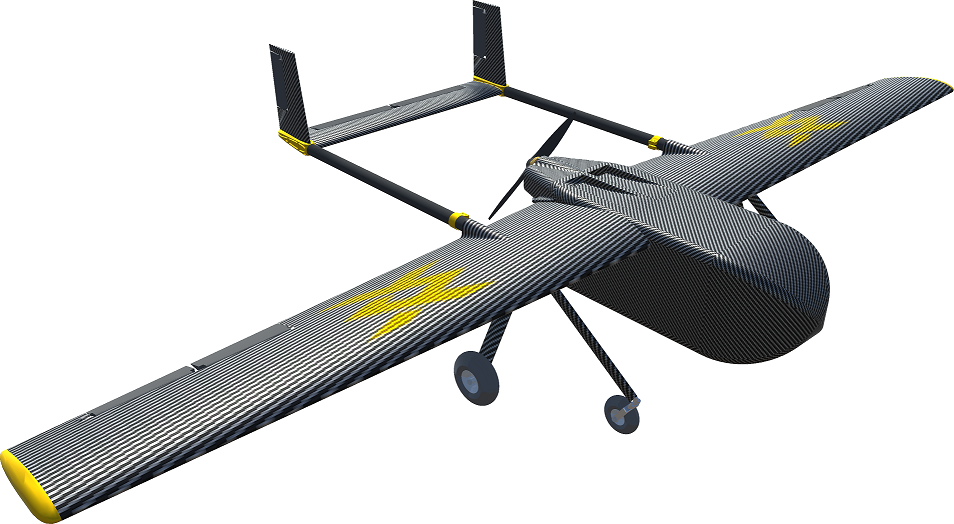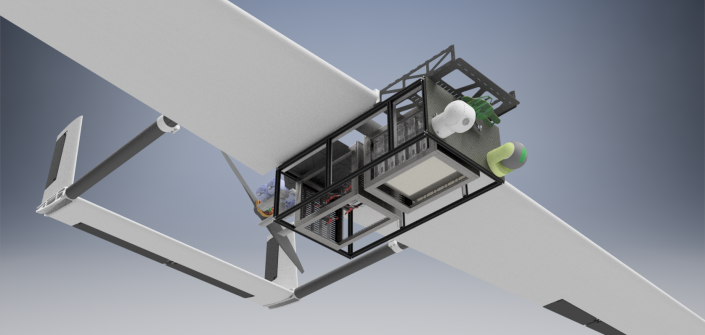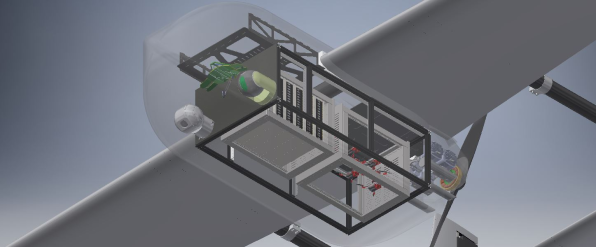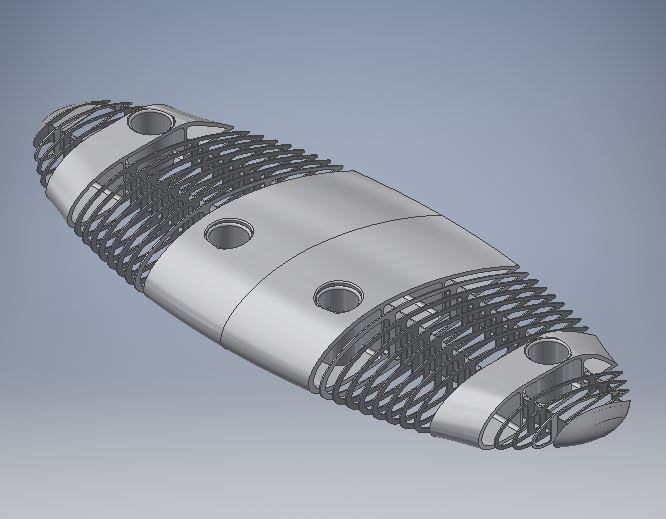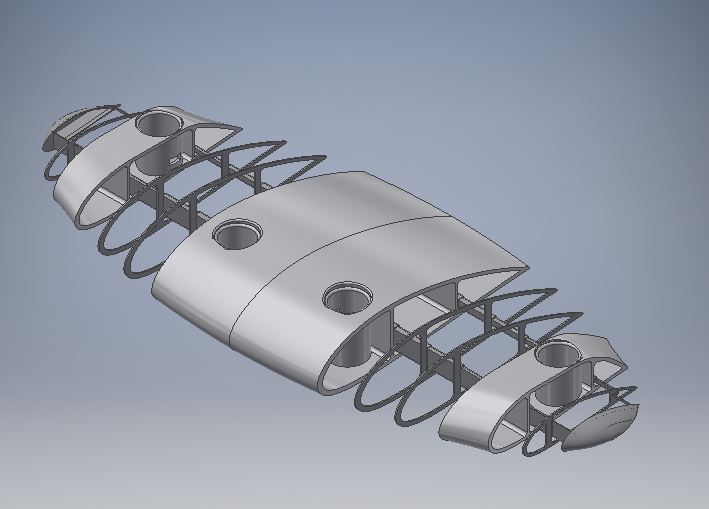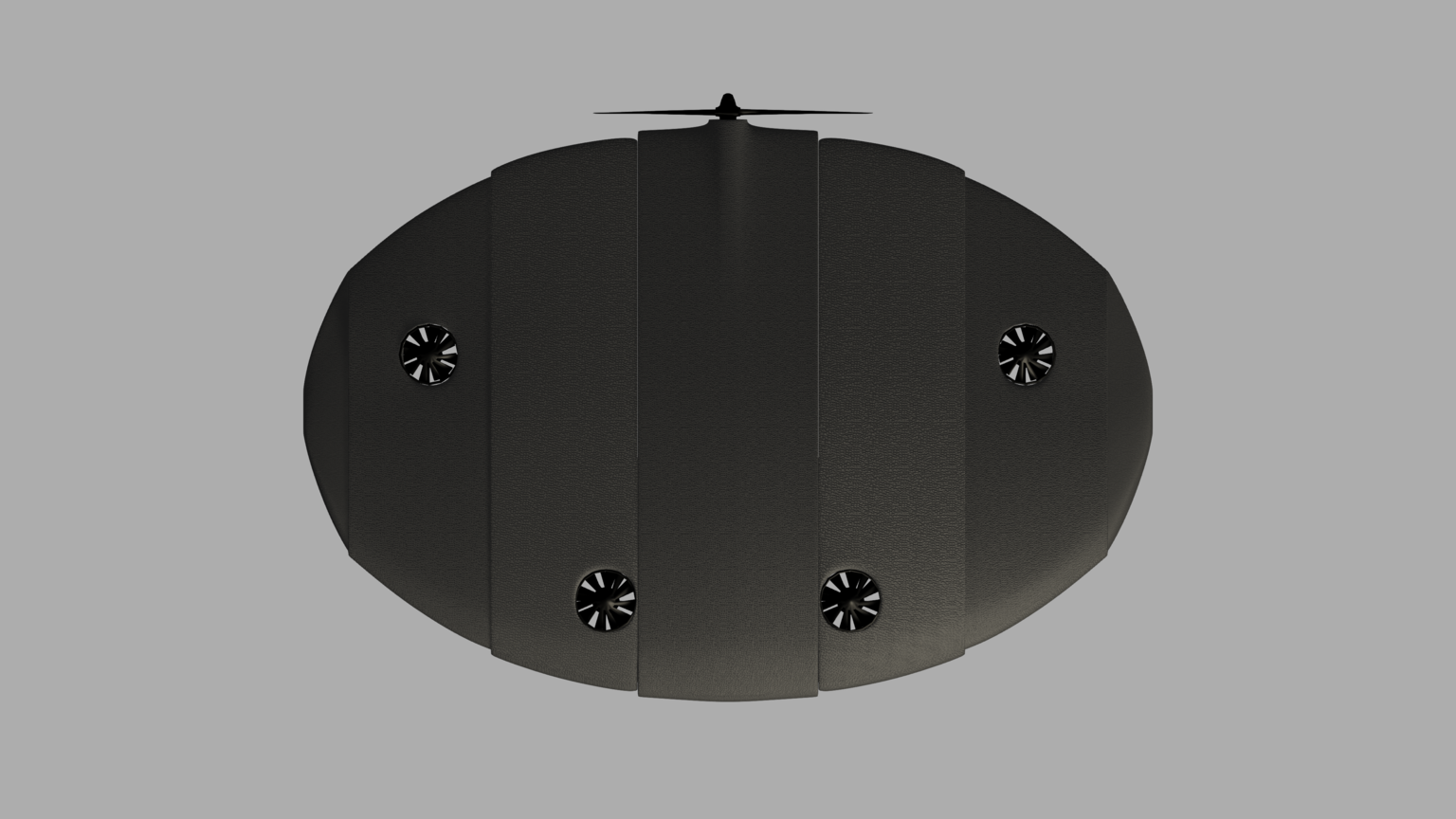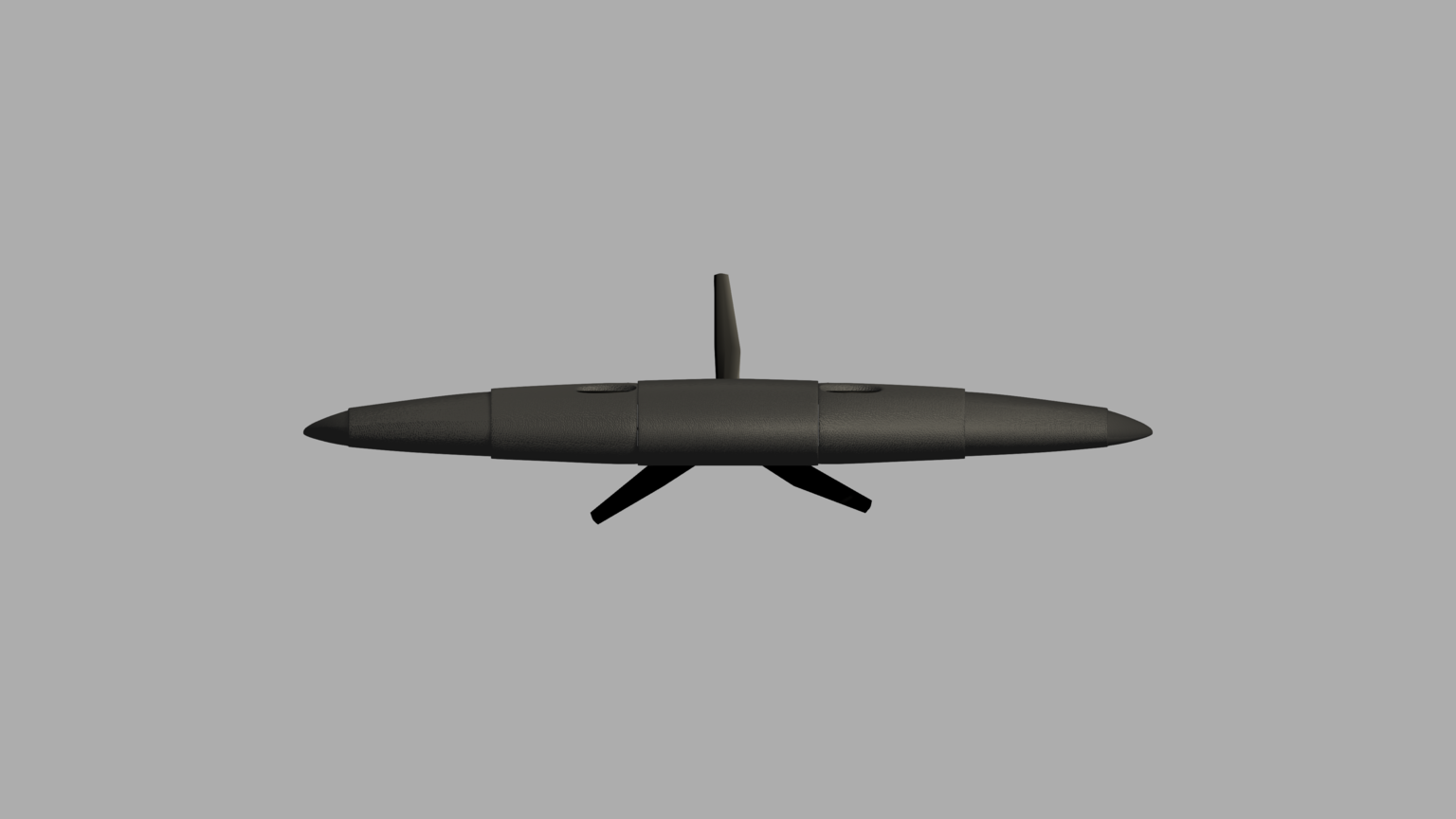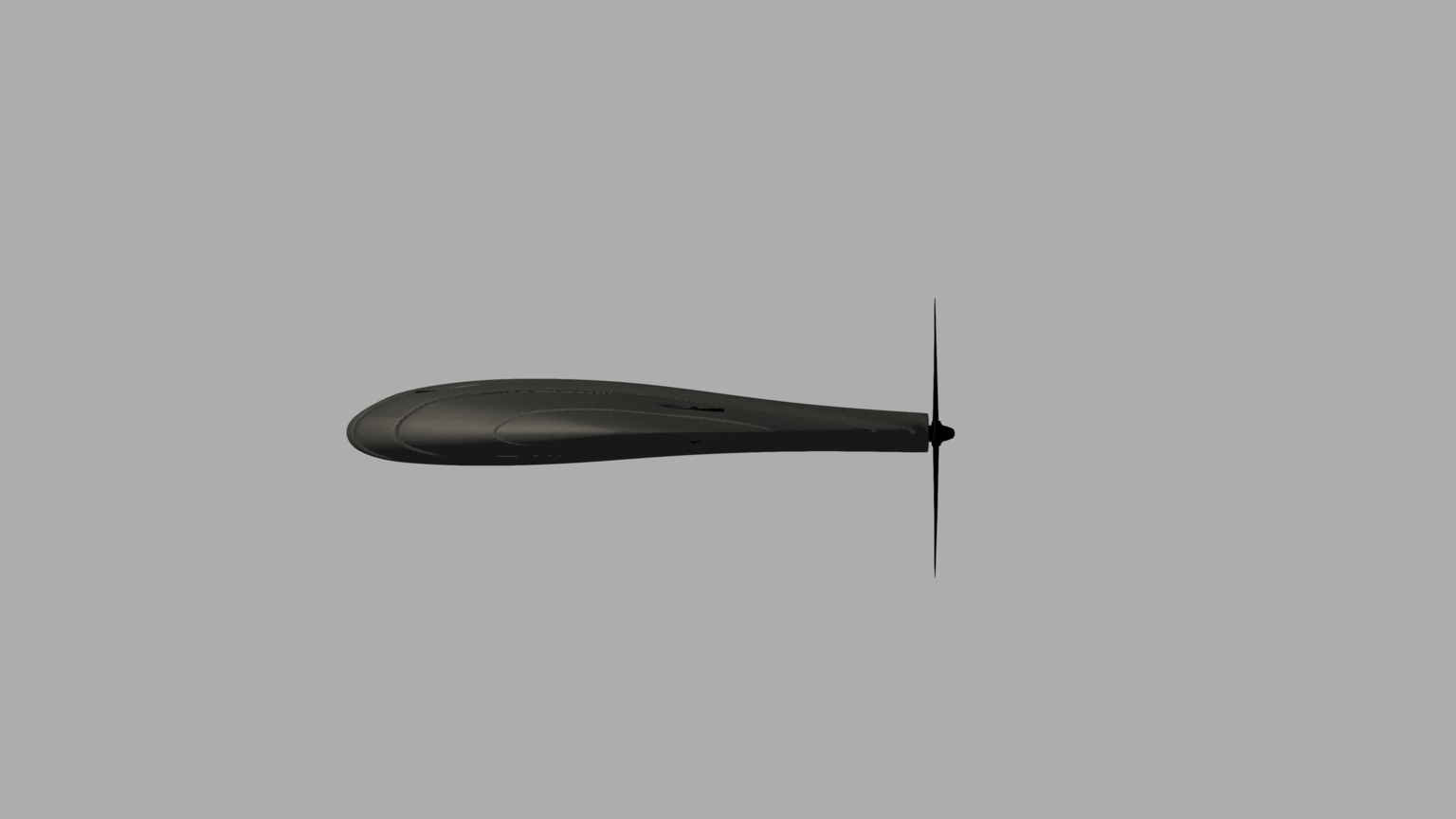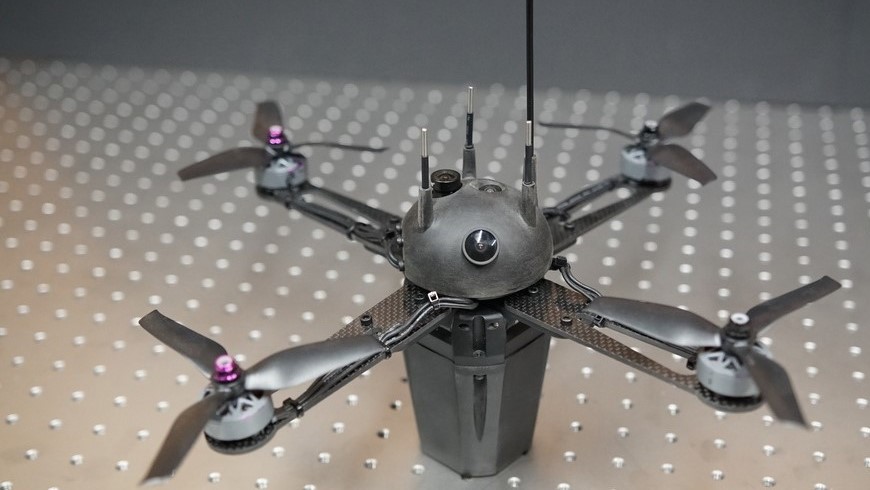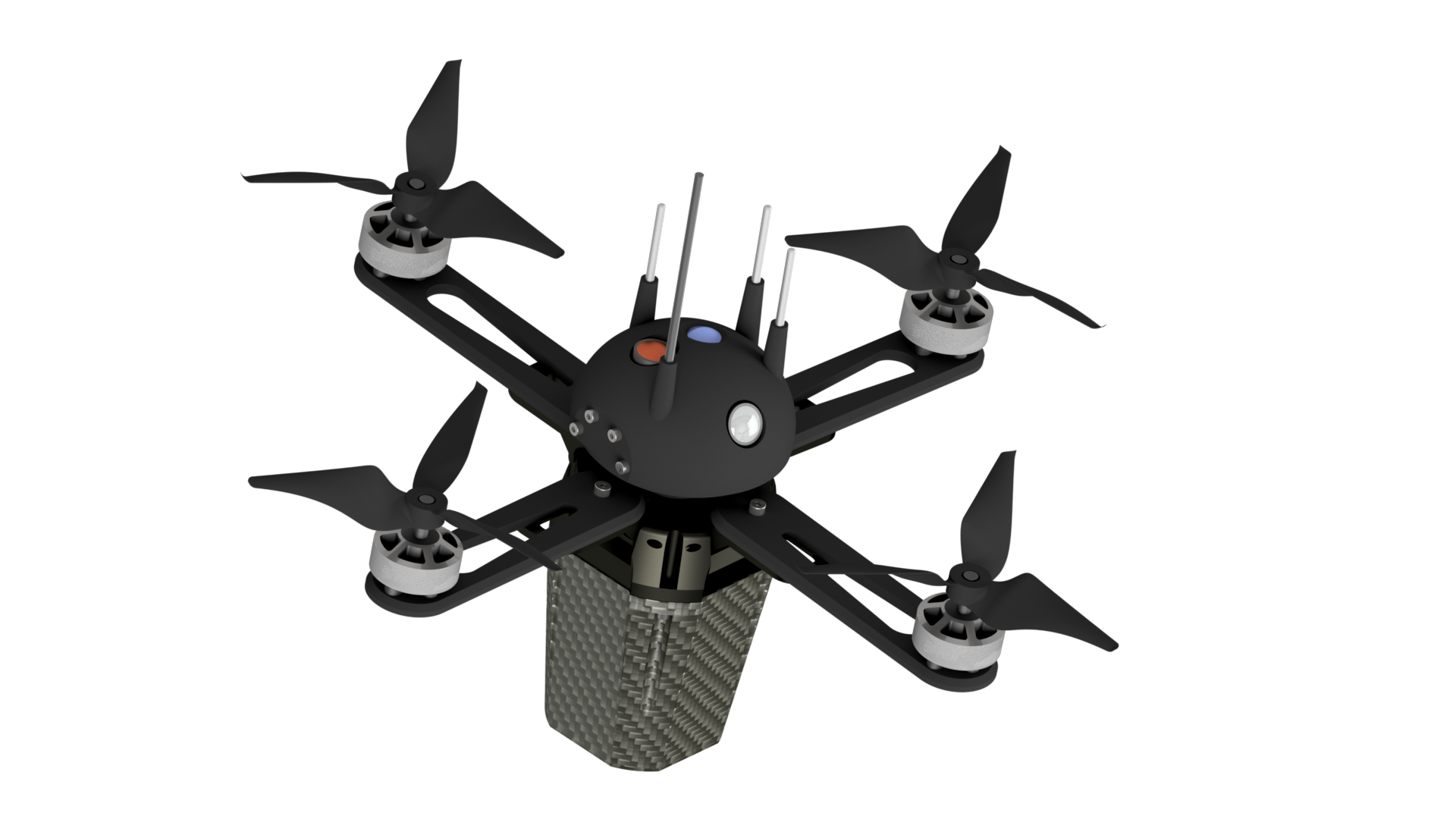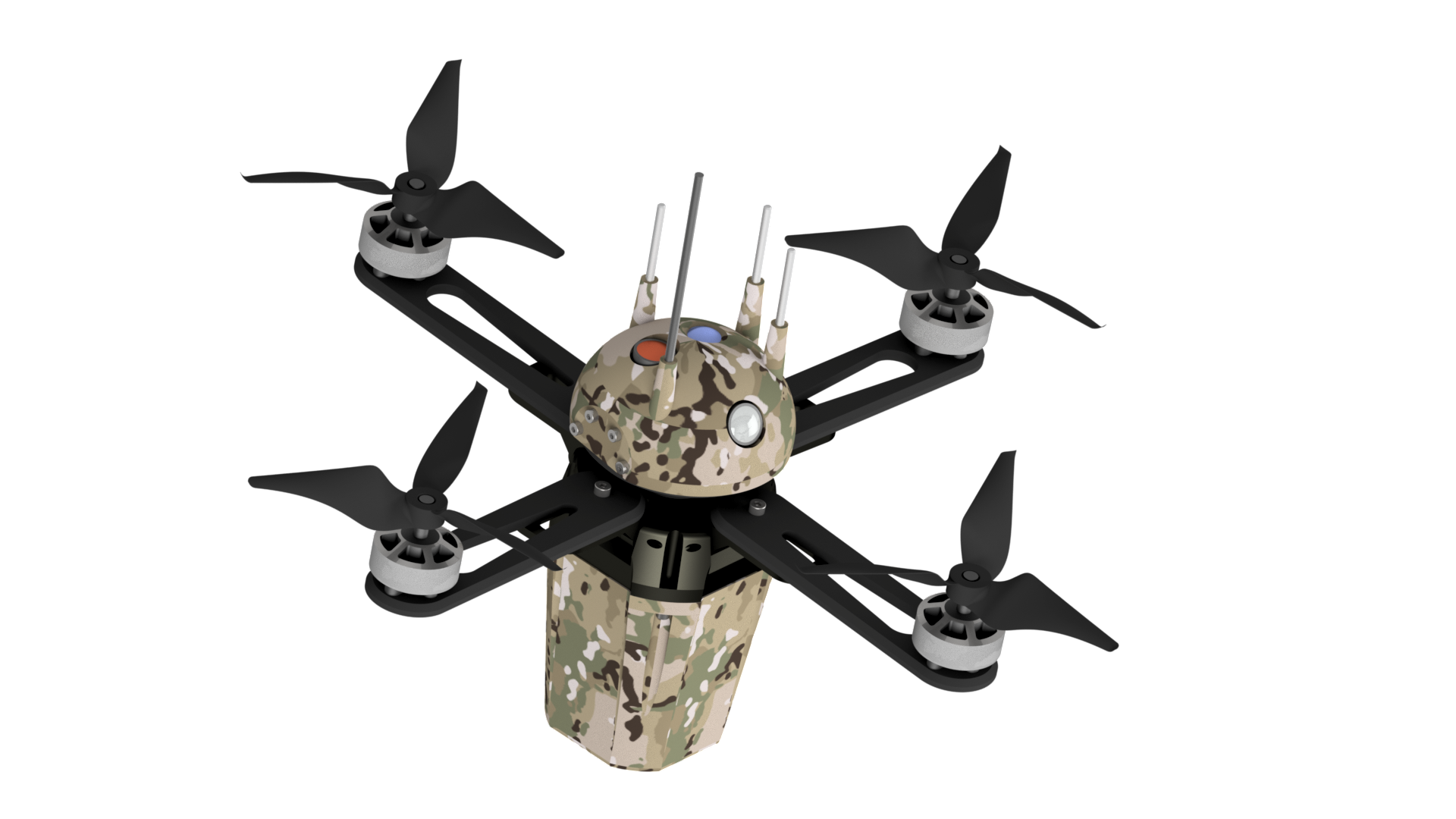Unmanned Aerial Systems
Simbiant's expertise includes the development, manufacture and operation of Unmanned Aerial Systems
Large UAS - B600
Simbiant can build and operate heavy payload, catapult launched, Large Unmanned Aerial Systems.The B600 is a large UAV designed for quick and easy changing of payloads by means of a removable payload box located in the underside of the fuselage measuring 100x65x45cm and able to carry up to 50kg. This UAV is designed to carry multiple types of payload boxes, from standard enclosed boxes to boxes that can open mid-flight to release the payload. Made from molded carbon fibre, this UAV is strong but lightweight at under 90kg empty.
| Wing Span | Height | Length | Wing Area | Maximum Takeoff Weight | Empty Weight | Cargo Pod Size | Cruise Velocity (MTOW) |
|---|---|---|---|---|---|---|---|
| 6.45m | 1.1m | 3.4m | 3.94m | 140kg | 90kg | 1.00x0.65x0.45m | 25m/s |
Small UAS - S099
Simbiant can build and operate unique, collapsible and efficient Small Unmanned Aerical Systems.
The S099 is a telescoping collapsible SUAV design that can collapse to 0.54m and then split down the middle, making the compacted size 0.27m by 0.33m by 0.16m. At under 2kg, this lightweight SUAV is highly portable. In its expanded assembled state, it has a wing span of under a metre and has a maximum speed of 25m/s, with a minimum cruise speed of 18m/s. It's elliptical wing allows for the long endurance flight of a fixed wing UAV while the four ducted fans provide both the VTOL ability and the maneuverability of a quad-copter.
| Wing Span | Max Width | Max Thickness | Wing Area | Max Velocity | Max Weight | Empty Weight | Payload | Cruise Velocity |
|---|---|---|---|---|---|---|---|---|
| 99cm | 40cm | 8cm | 2566cm^2 | 25m/s | 3.85kg | 2kg | 1.85kg | 18m/s |
Dual-Role Small VTOL UAS Prototype
Simbiant's previous prototype testbed. Capable of vertical takeoff and landing, and able to stay aloft for longer than a standard quad-copter, and controllable via easy-to use interface.
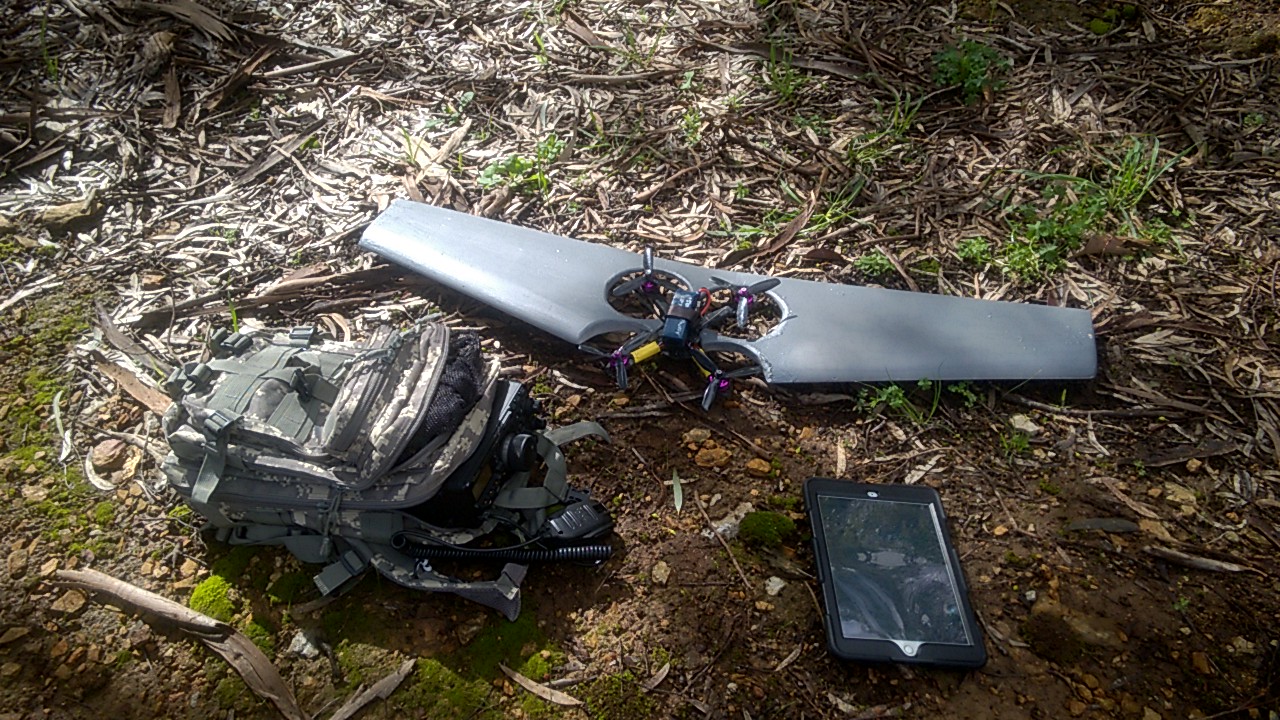
Micro UAS
Simbiant builds tiny, specialist UAS systems that are collapsible and autonomous for ease of use and transport.
Active Camouflage
Simbiant is developing cutting edge active camouflage for air vehicles.
Keeping out of sight can be difficult for small, low-flying unmanned aerial systems. Simbiant is building the capability to reduce visual detection range of airborne platforms by matching the hue and luminosity of the background sky using cutting edge video processing and OLED technology.
Simbiant has done extensive work on drone detection, classification, and tracking for numerous platforms and applications. In our work, we have developed machine vision and machine learning capabilities to detect, classify and track airborne targets in the visual and IR spectrum. As this necessitated collecting and generating vast quantities of training data on UAS systems to allow training and testing of AI systems, it also gave us deep insights into what makes an aerial object detectable. We have gathered real-world and simulated data on drone detectability depending on sky luminosity, lighting conditions and drone colouring and material.

Simbiant have designed and manufactured drones to fill various defence and civilian needs as well as to test our drone detection systems. We have access to numerous commercial platforms to do initial luminescence testing, including fixed wing and multi-rotor systems. We are currently developing a heavy lift 50kg payload, fixed wing drone and are well integrated into the Australian drone manufacturing ecosystem. We have qualified and certified drone and UAS pilots with thousands of hours rotary and fixed wing experience. We have already partnered with Dotterel, a NZ drone noise suppression company, and noise mitigation components are already part of our platform design.
Simbiant have been working together with army to produce various small UAV and micro UAV field solutions. In this process we have been exploring low observable technologies, in visual, IR and acoustic spectra.
From modelling, trials data, and machine learning results, we have seen that any balancing of luminescence influences observability. Specifically, reducing the edge contrasts has the greatest influence per watt of power budget.
Colour matching has an observable but diminished effect, and it should be put to trial whether increasing lumens, or colour matching are a more effective use of the power budget.
Simulation and empirical evidence suggest that any amount of white light luminescence improves the low-observability of an aerial target in daylight operations. This means that the illumination does not need to be as high as the background luminescence. But the closer the match, the less observable.
Once a certain degree of luminescence has been achieved, colour balance starts to have a greater effect.
MySky
Simbiant provides domain expertise in Counter-UAV design and development
Simbiant have a prototype Man Portable Very-Fast Surface-to-Air airborne UAV interceptor
Our R&D focuses on micro sensor suites to map drone traffic, whether to classify friendly traffic, or to target hostile activity
Sensors are suitable to be mounted on Micro UAV’s and swarming situational awareness, or attack drones.
